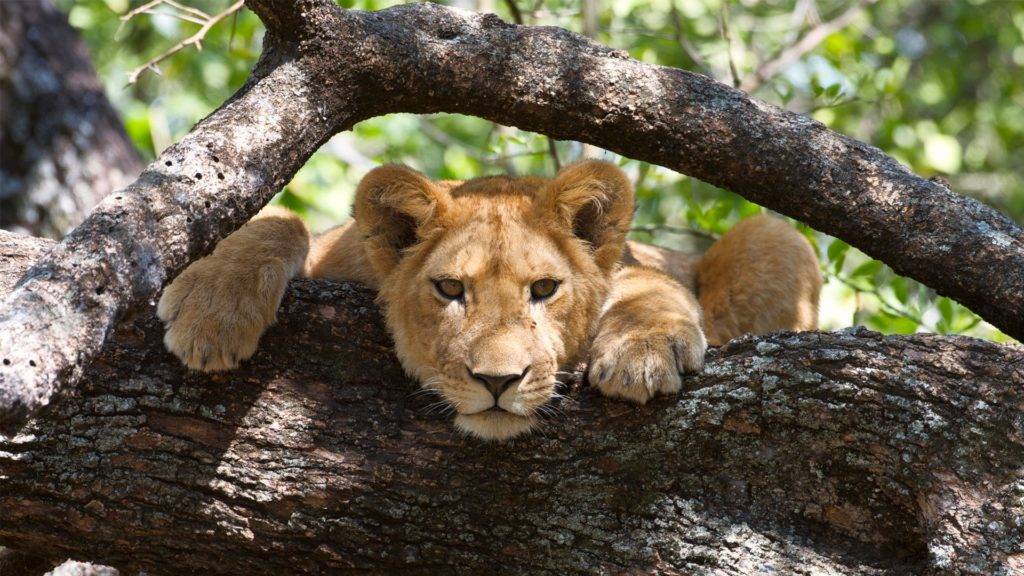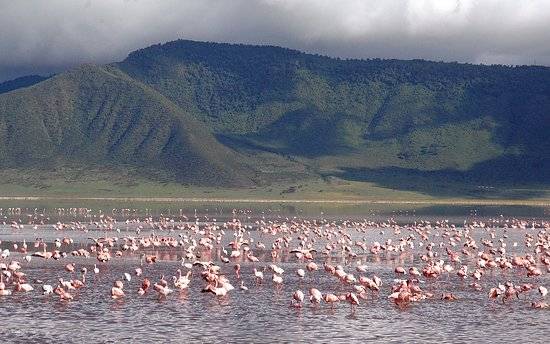Lake Manyara national park

Exploring the Wonders of Tarangire National Park
Lake Manyara National Park, positioned as a gentle introduction to East Africa safari, follows the impressive Tarangire National Park and is nestled at the base of the Great Rift Valley escarpment. Encompassing 325 km², with 230 km² dedicated to the lake surface, this scenic destination showcases captivating landscapes. However, while its aesthetic appeal is undeniable, the wildlife experience falls short when compared to the offerings of Tarangire, the Ngorongoro Crater, and the Serengeti.
Famed for its tree-climbing lions, vibrant flamingos, and the striking soda-ash lake at its center, Lake Manyara National park is often recommended for a day trip rather than an extended stay. Serving as a picturesque stop on the route from Arusha to the Ngorongoro Crater, it boasts tree-climbing lions, diverse birdlife, and notable sightings of elephants and baboons. The lake dominates much of the park, creating a narrow strip of land along its shores where wildlife congregates.
Lake Manyara national park undergoes transformations with the seasons. During the dry season, the isolated lake experiences intense evaporation, revealing its slightly salty nature, attracting hippopotamuses, flamingos, and various aquatic species. Despite its saltiness, the lake remains a safe watering hole for the park’s animals. In contrast, the wet season expands the lake, providing an ideal setting for guided canoe safaris. Conversely, the dry season can shrink it to a point where one could almost walk across it.
When water is present, the lake’s edge becomes a hotspot for observing klipspringer, rock hyrax, and porcupines. A rich avian population, including Ruppel’s Griffon, Verreaux’s Eagle, the Augur Buzzard, and the Peregrine Falcon, along with an abundance of flamingoes, calls the lake home throughout the year.
While Lake Manyara is commonly included in itineraries for an afternoon game drive en route to Ngorongoro, it’s essential not to overlook its unique charm. Although it may not rival the heavyweight game-viewing destinations, it contributes its own distinct allure to the East African safari experience.
Wildlife in Lake Manyara National Park
While the game concentrations in this park may not be as high as those in the surrounding areas, there are numerous unique species that make it an enticing safari destination. The primary attraction of this park remains the renowned tree-climbing lions of Lake Manyara. The mystery behind why these lions have developed this habit is still under debate, but witnessing a pride lounging in an acacia tree is an extraordinary spectacle!
Apart from the iconic tree-climbing lions, the park boasts a notable population of elephants and a large number of baboons. The diverse landscape supports a rich variety of other wildlife, including wildebeest, buffalo, hippopotamus, flamingos, zebras, warthogs, waterbucks, giraffes, dik-diks, and impalas. Additionally, bird enthusiasts will find the birdwatching experience quite rewarding, with a particular emphasis on raptors. Plan your safari to Lake Manyara, where the allure lies not only in the abundance of game but also in the unique behaviors of its resident wildlife.
What could be the number of Flamingos on Lake Manyara?
Flamingo sightings at Lake Manyara National Park vary depending on the time of your visit. These elegant birds often gather in large numbers, but the exact count is unpredictable as they frequently migrate between Lake Manyara and other East African lakes. Whether you spot just one or are fortunate enough to witness a gathering of 10,000, the experience remains a matter of chance during your visit.
The optimal time to catch a glimpse of flamingoes at Lake Manyara is during the dry season, typically from July to October. However, keep in mind that flamingo movements can be unpredictable, and their numbers may vary. Visiting during the dry season increases your chances of witnessing these beautiful birds in significant numbers as they tend to concentrate around the lake during this period.

Best time to visit Lake Manyara National Park
While the official peak season for regional migration in Manyara is typically from July to October, it’s essential to note that the park, despite its size, offers consistent and enjoyable soft game viewing throughout the year. Whether you find yourself in the area with limited time or planning a visit as part of your Northern Tanzania circuit en route to the Ngorongoro Crater or Serengeti, Lake Manyara remains a great starting point for your Tanzania safari adventure.
What Other activities could be carried out at Lake Manyara?
The primary attraction for visitors remains daytime game driving, but there have been recent additions to the park’s offerings, including night safaris and short walks around the camps deep within the park. Opting to stay in the Rift Valley outside the park introduces a plethora of new possibilities, as certain lodges provide activities like walking safaris, village excursions, hiking, and mountain biking.
Expert Recomendation for Lake Manyara National Park
Lake Manyara National Park might not boast as much as other parks, so our suggestion is for safari enthusiasts to allocate just a single day for exploring the park or its surrounding areas. A half-day game drive within the park is highly recommended, coupled with a visit to the local community to partake in various short activities.

Meet Allano, the founder of Active Wonders Safaris Tanzania, a tour company dedicated to crafting transformative safari adventures for more than a decade. Allano, hailing from Tanzania, nurtured a profound connection to the region’s cultures and customs since childhood.
Join his odyssey and discover the essence of the African Safari encounter.


